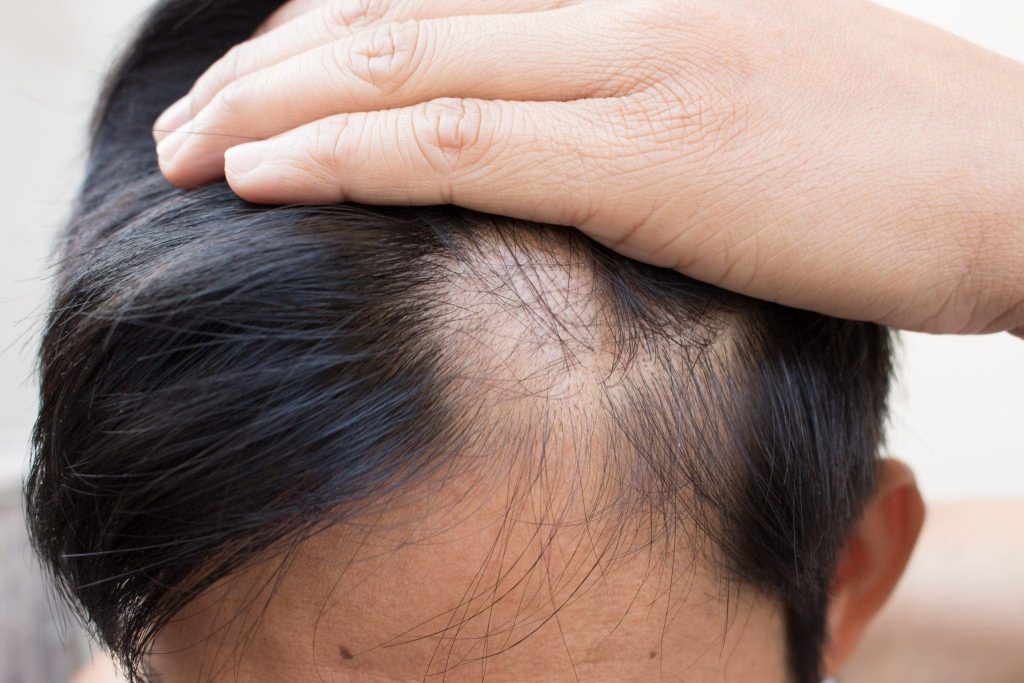12 Signs and Symptoms of Alopecia You Should Not Ignore

Hair loss can be an unsettling experience, often creeping up on individuals subtly rather than announcing itself with grand gestures. It might start with more hair on the shower floor, an itch that doesn’t go away, or noticing that your part line looks distinctly wider in photographs. While some signs of hair loss seem minor and easily overlooked, others may feel embarrassing or be brushed off as insignificant. Yet, specific patterns can indicate alopecia, a medical condition leading to hair loss. Identifying these early can prevent permanent loss and reduce anxiety. Drawing from years of experience in hair and scalp health, I’ve seen how often people miss these early indicators. This guide highlights signs and symptoms that warrant attention, what they typically look like, and how to differentiate them from normal hair shedding.
The Importance of Early Recognition
Alopecia is a common condition with various forms. Androgenetic alopecia, or pattern hair loss, affects up to half of all men and an estimated 40% of women by age 50. Alopecia areata, an autoimmune condition, affects approximately 2% of people at some point in their lives. Other forms, such as telogen effluvium (stress-induced shedding), traction alopecia, and scarring alopecias, frequently appear in dermatology clinics. While some types are reversible, others can cause scarring and permanently destroy hair follicles if not treated promptly. Recognizing the signs can help distinguish between normal hair fall and more serious patterns that need investigation.
Understanding Hair Growth Cycles
Before delving into specific signs, it’s helpful to understand hair growth cycles. Hair grows in stages: the anagen (growth) phase, the catagen (transition) phase, and the telogen (resting) phase. At any given time, about 85–90% of scalp hairs are in the anagen phase, actively growing. Stressors that push too many hairs into the telogen phase simultaneously can lead to noticeable shedding. Hormonal changes or immune responses can also target hair follicles, altering growth patterns. Inflammatory conditions can scar follicle openings, hindering regrowth.
Recognizing the Signs
Below are twelve signs of alopecia that, if recognized early, can make a significant difference. Each description includes visual and sensory markers, the importance of each sign, and common misinterpretations.
1) Sudden Coin-Sized Bald Patches
What It Looks Like
- Defined Patches: Smooth, round or oval areas with sharp edges.
- Skin Appearance: Normal-looking skin or slightly peachy in tone. Edge hairs may appear as “exclamation point” hairs—short and tapered.
- Location: Can occur on the scalp, beard, eyebrows, eyelashes, or any hair-bearing area.
What It Feels Like
- Painless: Typically painless, but may preclude mild tingling or itching at the patch edges.
- No Scarring: Lacks scarring, scaling, or crusting.
Why It Matters
This pattern is indicative of alopecia areata, an autoimmune condition where the body attacks hair follicles. It can occur after infections, illness, or emotional stress, though sometimes without an obvious trigger. While patches may regrow spontaneously over time, new ones can appear. Early identification allows for timely diagnosis and exploration of possible autoimmune connections.
Common Misreads
- Fungal Infection Confusion: Mistaking it for tinea capitis, a fungal infection. Unlike alopecia areata, fungal patches often have scaling and broken stubble.
- Assuming Normal Shedding: Mistaking crisp-edged patches for typical shedding, which is more diffuse.
Real-World Example
Consider a 28-year-old who discovers a quarter-sized bald spot near the back of the head after recovering from a flu-like illness. A couple of weeks later, another patch appears, suggesting alopecia areata.
2) Excessive Daily Shedding That Persists
What It Looks Like
- Visible Shedding: Increased hair on pillows, in the shower, on brushes, or clothing.
- Ease of Loss: Hair falls out easily when combing, typically full-length with a white bulb (telogen bulb) at one end.
What It Feels Like
- Scalp Sensitivity: Generally not tender. Some experience a prickly sensation known as trichodynia, often stress-related.
Why It Matters
Persistent shedding beyond a few weeks can indicate telogen effluvium, where more hairs enter the resting phase. Common triggers include high fever, illness, surgery, childbirth, crash dieting, anemia, thyroid issues, or certain medications. It is often reversible once the underlying cause is addressed.
Common Misreads
- Volume Misinterpretation: Believing “I’m losing all my hair.” Telogen effluvium reduces volume but doesn’t usually cause bald patches.
- Confusing with Breakage: Mistaking broken hairs for shedding. Broken hairs lack the white bulb and result from physical damage rather than a growth cycle shift.
Data Insight
Most people shed 50–100 hairs daily. Those experiencing telogen effluvium report shedding two to three times that amount consistently. Diagnosis often relies more on pattern and history than on a specific number.
3) A Widening Part Line
What It Looks Like
- Visibility Increase: A broader center part with more visible scalp. In women, a “Christmas tree” pattern can appear under bright light.
- Volume Reduction: While the hairline may seem intact, top volume appears reduced.
What It Feels Like
- Ponytail Thickness: No pain or itch necessary. Many note their ponytail feels thinner.
Why It Matters
This is characteristic of female pattern hair loss, driven by gradual follicle miniaturization. Hair in the part line appears wider due to shrinkage in individual hair diameter and increased presence of shorter, finer hairs. It’s a common condition, affecting about 40% of women by age 50 and can occur alongside telogen effluvium, accelerating part widening.
Common Misreads
- Natural Part Assumption: Dismissing changes as “just my natural part.” Reviewing older photos can reveal gradual changes.
- Styling Blame: Attributing visibility solely to styling or product buildup.
Real-World Example
A 42-year-old notices increased scalp visibility in selfies. Blood tests reveal low ferritin. Despite correction, the part widening persists, indicating underlying pattern hair loss.
4) Receding Temples or a Creeping Hairline
What It Looks Like
- M-Shaped Recession: Hairline recedes at the temples, forming an M-shape in men. In women, temples may hollow subtly.
- Baby Hairs: Short, fine “vellus-like” hairs along the frontal fringe.
What It Feels Like
- Sensitivity: Rarely painful. Some feel sensitivity or a sunburn-like sensation at the hairline.
Why It Matters
In men, this indicates the onset of androgenetic alopecia, potentially starting in late teens or early 20s. In women, particularly post-menopause, temporal recession might also occur. It can also signal traction alopecia from tight hairstyles. A border with short, broken hairs suggests traction and possible folliculitis.
Common Misreads
- Mature Hairline Confusion: Attributing changes to natural maturation after puberty. Continued temple recession with diameter variability indicates pattern loss.
- Stress Blame: Attributing temple loss solely to stress without considering traction or pattern loss.
Data Insight
Approximately two-thirds of men notice some hairline change by age 35, though progression rates vary.
5) Thinning at the Crown/Vertex
What It Looks Like
- Circular Thinning: A thinning area at the crown, with more visible scalp under overhead lighting.
- Photo Recognition: Often noticed through photos taken from behind.
What It Feels Like
- Sun Sensitivity: Generally symptom-free, though sun sensitivity may increase.
Why It Matters
The vertex is a common site for androgenetic alopecia. Crown thinning and frontal recession may progress together or independently.
Common Misreads
- Cowlick Confusion: Misinterpreting thinning as a changing cowlick.
- Dandruff Assumption: Mistaking thinning for dandruff, which doesn’t cause a persistent visible spot.
Real-World Example
A 31-year-old discovers a visible “halo” at the crown under stadium lights, similar to patterns seen in family history.
6) A Mix of Thick and Very Fine Hairs in the Same Area
What It Looks Like
- Diameter Diversity: In affected regions, hair thickness varies. Some shafts appear normal, others are thin and wispy.
- Short, Soft Hairs: The hairline or part includes short, soft hairs that don’t grow long.
What It Feels Like
- Texture Change: Hair feels less full and doesn’t style well.
Why It Matters
This diversity indicates follicle miniaturization, a hallmark of pattern hair loss. Follicles still produce hair, but cycles yield thinner, shorter strands until the follicle rests.
Common Misreads
- Breakage vs. Miniaturization: Confusing breakage with natural miniaturization.
- Baby Hairs Misinterpretation: Assuming fine hairs indicate regrowth, when they may be miniaturized.
7) Itchy, Burning, or Sore Scalp (Trichodynia)
What It Looks Like
- Invisible Irritation: No visible rash necessary, but persistent itch, tingle, or soreness may occur.
What It Feels Like
- Prickly Sensation: Described as pins-and-needles, prickly heat, or sunburn. Can flare with stress or shedding.
Why It Matters
Scalp discomfort with shedding is common in telogen effluvium. Nerves around high-turnover follicles become sensitive. Itch and soreness also accompany inflammatory scalp conditions and scarring alopecias.
Common Misreads
- Product Irritation Assumption: Attributing symptoms solely to product irritation, which typically shows clear contact timing.
- Ignoring Pain: Overlooking pain due to lack of visible rash.
Real-World Example
A 36-year-old experiences a tender, prickly scalp after a major life event, with heavy shedding.
8) Redness, Scaling, or “Collarette” Scale Around Hairs
What It Looks Like
- Inflamed Scalp: Red patches, flaky scale, or greasy sheen.
- Perifollicular Scale: White adherent scale around individual follicles.
What It Feels Like
- Itchiness: Commonly itchy; the scalp may feel tight or irritated.
Why It Matters
Inflammatory conditions can trigger or exacerbate hair loss. Seborrheic dermatitis and psoriasis frequently co-occur with alopecia. Perifollicular scale is a warning for scarring conditions, signaling potential permanent loss.
Common Misreads
- Dandruff Assumption: Mistaking inflammation for mild dandruff.
- Self-Trauma: Scratching or picking can add breakage to underlying issues.
Data Insight
Perifollicular erythema and scale are consistent signs in scarring alopecia cohorts, with early recognition aiding follicle preservation.
9) Pimples, Pustules, Crusts, or Draining Bumps on the Scalp
What It Looks Like
- Inflamed Lesions: Tender pustules, yellow crusts, or inflamed bump clusters. Severe cases may involve draining nodules.
- Tufted Hairs: Multiple hair shafts from a single follicle opening.
What It Feels Like
- Painful Areas: Painful, throbbing areas; sometimes a foul odor from crusts.
- Scar Formation: Can become scarred and shiny over time.
Why It Matters
Such patterns suggest neutrophilic scarring alopecias, like folliculitis decalvans or dissecting cellulitis. These inflammatory diseases damage follicles. In children, tinea capitis can also cause pustules and crusting.
Common Misreads
- Routine Acne Confusion: Treating it as simple acne.
- Covering Lesions: Styling to hide lesions without addressing inflammation.
Real-World Example
A 24-year-old man develops sore, oozing bumps at the crown, leading to rapid thinning and eventual scarring.
10) Smooth, Shiny Patches Where Pores Seem to Vanish
What It Looks Like
- Polished Appearance: Smooth, shiny areas of hair loss.
- Absence of Pores: Lack of visible follicular openings.
What It Feels Like
- Post-Inflammation: Not painful post-inflammation, though early stages may itch or burn.
Why It Matters
This indicates scarring (cicatricial) alopecia, conditions that can permanently destroy follicles.
Common Misreads
- Breakage Confusion: Mistaking it for close-to-root breakage.
- Sunburn Glint: Confusing with sunburned scalp glint.
Data Insight
Scarring alopecias are less common but lead to irreversible outcomes, highlighting the importance of early identification.
These signs provide a comprehensive view of potential alopecia indicators. By recognizing them early, individuals can seek timely intervention, preserving hair health and peace of mind.


